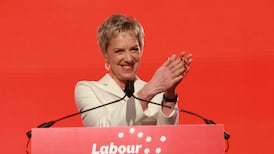Have you ever been in a cafe or restaurant beside a young couple who, when their food arrives, whip out their phones to photograph the dinner from a variety of angles? What happened to just enjoying eating your food?
This week, while teaching economics in Trinity College Dublin – one of the joys of my year – I was chatting with the students about generational differences. We concluded that a deep division, an obvious marker, was the dinner photo-op. For many people of my generation, youngsters taking photos of food is a bizarre ritual. Yet it is a great example of the dream economy.
The dream economy is the commercialisation of emotions, the monetisation of feelings and identity. The Instagrammer is saying to all and sundry, when capturing his or her Dublin Bay scallops, arranged artistically on the plate, that this is the sort of person I am. They are not saying something as bland as “I like this”, rather it is “I am like this”. This is my tribe. I am a member of the “fresh scallop tribe”, a sophisticated subset of carnivore, possibly pescatarian, which, as everyone knows, comes with its own implicit erudition.
Three decades ago Rolf Jensen wrote The Dream Society, which predicted that people’s spending habits were changing. He forecast that people would buy stories, legends, emotion and lifestyle. He was spot on, and the arrival of social media has accelerated that trend. When societies get richer, people move on from necessities to spend on experiences. In the past, this sort of behaviour was limited largely to sport. For example, people paid to watch their favourite team. Today, lifestyle spending extends to bands, chefs, writers, thinkers, even podcasters.
READ MORE
Anyone who has gone to a festival can attest to the fact that when you are at a festival, money is spent liberally and, unlike other forms of spending, this money is spent on local services
In Ireland, and all wealthier countries, the dream economy is huge, involving tourism, humanities, art, music and festivals of all sorts, appealing to a range of tastes, from the broadest to the most niche palates. As we head into the festival season, hundreds of events will be hosted all over the country, employing thousands of artists, musicians, writers, producers, researchers, audiovisual technicians, editors, security, travel agents, tent riggers and a whole host of creative professionals.
This is relatively new, but it is growing at a phenomenal pace as the dream economy becomes a big-ticket item. Some call it the creative economy, others the infotainment industry, where entertainment meets information in a big day out. Whatever you call it, as society gets richer, an increasing number of people’s expenditure goes towards unique experiences rather than simple commodities.
The result of this shift in personal expenditure is an extremely vibrant and important sector of the economy. The arts sector directly supports nearly 55,000 jobs, some two-thirds (67 per cent) of them outside Dublin. This year, according to Fáilte Ireland, the number of overseas visitors coming to Ireland to attend a festival is expected to reach 300,000. The arts sector contributed more than €1.16 billion in gross value added to the economy, according to a 2020 EY report.
In Galway alone, the Galway Advertiser estimates that the city’s three major summertime festivals – the Galway Film Fleadh, the Galway International Arts Festival and the Galway Races – attract 375,000 people to the city and generate about €90 million for the local economy. The arts festival draws 200,000 visitors alone.
[ A handy guide to 99 of the best Irish festivals in 2023Opens in new window ]
An independent study, commissioned by those in the promotions industry alongside Fáilte Ireland and Imro, indicates that four million people attended a Ticketmaster event in Ireland from 2015 to 2016, and more than 250,000 of them travelled from overseas. Live entertainment contributed €1.7 billion of net additional revenue, €669 million of net additional income and some 11,000 additional jobs to the Irish economy during this period.
The knock-on impact for traders, hotels, pubs and the like is enormous. For every €1 spent on a ticket an additional €6.06 of revenue is estimated to have been generated within the rest of the economy. Anyone who has gone to a festival can attest to the fact that when you are at a festival, money is spent liberally and, unlike other forms of spending, this money is spent on local services.
Music events make up the bulk of these figures, attracting about 2.2 million visitors to the Republic, with arts, literature, theatre and comedy drawing a further 860,000. In terms of gross value added, music events lead the way generating €376 million, followed by arts, theatre and comedy (€114 million).
Despite the headline figures, the arts and culture in general is an expensive business. At the core of the dream economy are the artists themselves and those who take the risk to host festivals.
This Government has dramatically increased State funding to the arts. The Arts Council now receives a grant of €130 million, which represents a significant increase of more than 60 per cent in arts funding in under three years, having received just €80 million in Budget 2020. The background noise to this increase was the pandemic, which eradicated all the income from festivals.
The State, recognising that most artists struggle to make ends meet, also launched a pilot scheme last year to provide a universal basic income for artists. The scheme ensures that 2,000 artists and creatives are given a payment of €325 per week, which comes out as just under €17,000 per annum, far below the average wage.
The 21st-century economy is a complex organism, a sensitive ecosystem and a central part of the dream economy, fuelled by the dreamer – the artists, poets, musicians, actors, writers, those whose contribution to society is enormous, yet few can monetise their impact.












